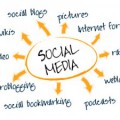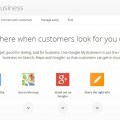In a nutshell: The promotional pyramid is a framework that helps you understand how to approach your buyers, from the broadest advertising campaign to personalized outreach. Business Administration Information has updated the pyramid for today’s tools and techniques.
The customers for your products and services are out there — but what’s the best way to reach them?
You might be tempted to sink all of your promotional investment into social media, as that’s one of the most effective ways to reach potential buyers these days. However, social media is just one of many elements of a comprehensive promotional campaign, and might not succeed if it’s not supported by a broader strategy.
It is very useful to think about promotion in terms of a pyramid, starting with a wide base that reaches the greatest possible number of customers, and peaking with one-on-one relationships with buyers. The promotional pyramid isn’t a new concept in business, but it hasn’t been particularly well known. Here at Business Information Administration, we have updated the promotional pyramid to reflect new marketing technologies and capabilities.
It all starts with the base …
Advertising and Social Media
This is where the promotional pyramid begins — and, sadly, for many companies, where it ends. Your advertising and social media efforts should attempt to reach the widest possible audience of potential customers. One of the biggest challenges for media buyers is to find the right vehicle to invest in. For some products and services, outreach should be done solely on social media. For others, a mix of print, TV and radio advertising may need to be added.
At this level, you should be doing more than just getting your name known. Develop a unique voice and messaging strategy that conveys your unique selling proposition. This will help you cut through the clutter.
Public Relations and Publicity
At this level of the promotional pyramid, you reach a smaller audience but your message can be more powerful. Public relations can help you gain favorable coverage in the media — or, in some cases, limit the damage of bad coverage. Publicity refers to the activities that bring you goodwill among customers, and may take the form of sponsorships and corporate social responsibility.
Email Communications
Now that you’ve established a voice and reputation on the first two levels, it’s now time to engage with the potential customers that really want to hear from you. This is best done through an email campaign, although for some industries and products a direct marketing campaign with print pieces might also be necessary. At this level, customers know about your product and have asked you for more information. Provide it, but don’t fall into the trap of sending spam or too many messages to be memorable.
Public Displays and Trade Shows
This oft-overlooked level provides a number of advantages for your company. Trade shows are used to demonstrate your product to other companies and commercial buyers — and are great opportunities to check out what your competitors are doing! Public displays, like a booth at a community event, allow people to interact directly with your product.
Literature and Sales Materials
This step, which involves creating promotional and sales materials, might not be necessary for all products and industries. If you’re selling tacos, you might not need to prepare brochures. If you’re selling expensive medical equipment, however, buyers will want to know in detail what it does and how it works.
Customer Relations
The more complicated the product, though, the higher level of support you’ll have to supply to consumers so that they know how to use the product effectively. You should also have the ability to respond politely to people on social media that rate your company.
P2P (Person-to-Person)
At the very pinnacle of the promotional pyramid, you want to have one-on-one relationships with your customers. Repeat business is critical, so building strong relationships with your large buyers is critical. Show your appreciation on an individual level, especially for your biggest and most important customers.







